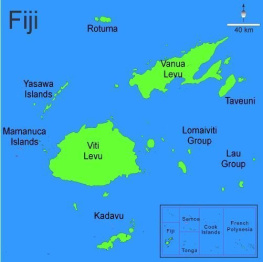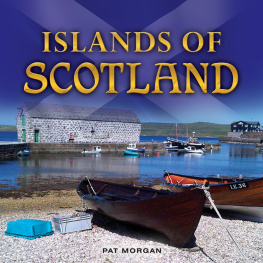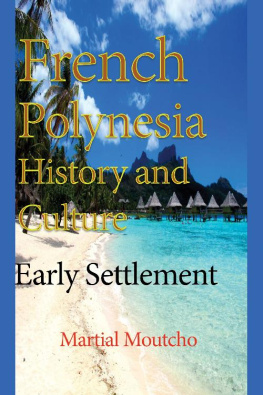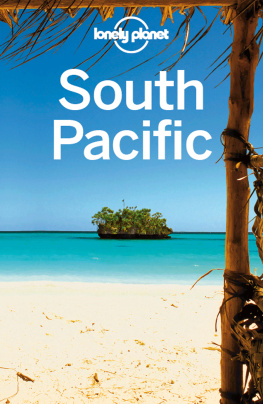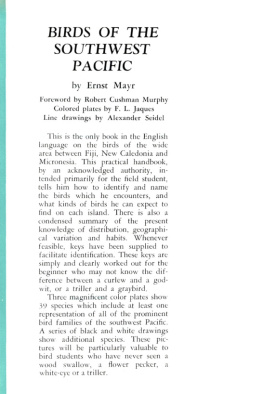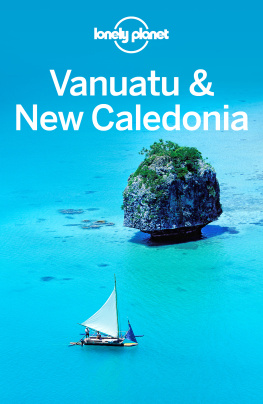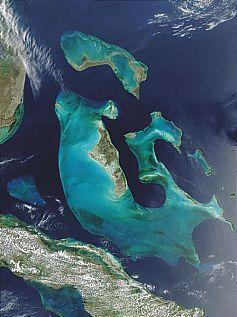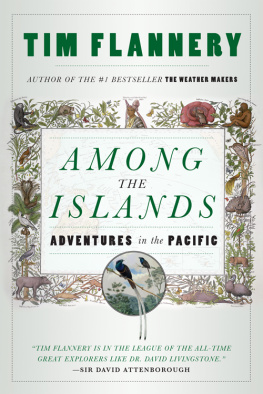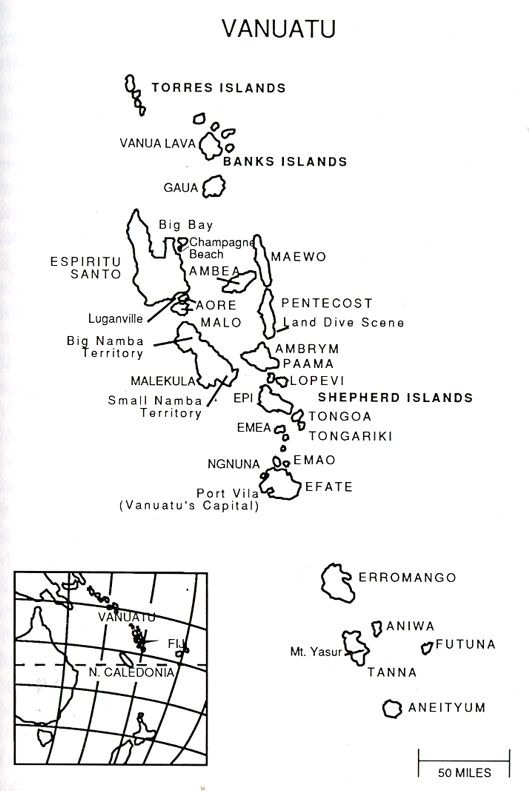THE SOUTH PACIFIC ISLANDS OF VANUATU
Thomas H. Booth
Hunter Publishing, Inc.
INTRODUCTION
Vanuatu, a cluster of 13 large islands and about 80 small ones in the southwest Pacific, 1,300 miles east of Australia, has had a kaleidoscopic past. Formerly known as the New Hebrides, it was administered as a British-French Condominium, referred to as "pandemonium" and the events surrounding independence in 1980 had Gilbert and Sullivan qualities. Then there are the languages they speak: French, English, 105 indigenous tongues, and the wonderful common language, Bislama.
The drama and color continue. The Prime Minister of Vanuatu is the head of government of the Republic of Vanuatu. The office of Prime Minister was created under the Constitution of Vanuatu upon the country's independence in 1980, with independence campaigner Walter Lini becoming the first office-holder. The position is sometimes seen as a continuation of the older office of Chief Minister, which existed before Vanuatu obtained its independence. The Prime Minister is required by the Constitution to be a member of Parliament, which also directly elects him or her into office. The Prime Minister directly appoints or dismisses members of the Council of Ministers (cabinet ministers). So far, eight people have served as Prime Minister of Vanuatu, sometimes on multiple occasions. There are still plots, counter-plots, and the last four Prime Ministers' elections to office were subsequently voided.
There are problems in Vanuatu. They sound malignant when read about in the press. But arrival in Port Vila, Vanuatu's capital and usual port of entry on the island of Efate, is accomplished quickly and easily. Port Vila, as it has for years, looks like a tropical version of a French Mediterranean resort. Its setting at the foot of green hills within a magnificent natural harbor makes it one of the most beautiful capitals in the Pacific. And when it comes to the amenities sophisticated travelers require, Port Vila has them all fine restaurants, French, American, Chinese, Mexican, or Aussie style food, palatial resort hotels, smart shops, trendy bars, and a harbor filled with foreign yachts.
Unfortunately, they do have storms, and on our last visit we saw the results. Three months after the fact, Vila still looked war-torn. There were houses in town with roofs missing, shops with all their windows out, warehouses along the docks buckled in. Several yachts were beached, and the interisland ship Konanda lay wounded at her dock.
It takes time to recover from such an event, but nature is more resilient than man. On the day after the storm all the leaves were blown from the trees, banana trees were left bare, most of the fronds from coconut palms were carried away. But a week later new buds were out and nature was busily repairing herself.
Man's efforts are somewhat slower, and many buildings we'd known before were in shambles and in need of repair. Rossi's Hotel, known as the Raffies of Port Vila, was tattered but still housing guests and turning out good food, though it is no longer in business. The Solaise, a moderately priced hotel, our favorite in town, was out of commission completely, and so were a number of other restaurants, hotels, and public buildings. But day by day as repairs were made and, when we left, Vila was busily entertaining visitors. The Fairstar had sailed into port with 1,500 Aussies, Japanese tourists were appearing, as were planeloads of enthusiastic Aussies and Kiwis. Yachts were filling the harbor and every one was having a good time. We were too.
The Land & Her People
The approximately 93 islands of Vanuatu, formerly called the New Hebrides, stretch in a north-south direction for 500 miles, and have a land mass of 6,500 square miles. Some of the small islands are coral atolls, the larger ones are volcanic in origin, and the terrain ranges from forest-covered mountains to grassy uplands to tiny reef-enclosed islets.
As to their volcanic origin, the process continues, and these islands are referred to as being within a "ring of fire." Literally they are, for five of the 500 active volcanoes of the world are here Benbow on Ambryn, Yasur on Tanna, Lopevi and Gaua and a submarine volcano off Tongoa Island.
Port Vila on Efate has a population of 15,000 and it's here most of the foreigners live and most of the holiday activities happen. Away from Port Vila conditions change rapidly and, other than two or three resorts at a distance from town, the island reverts to elemental Melanesian life style. There are some copra, coffee, and cacao plantations, subsistence plots of land growing yams, taro, manioc, bananas, and a number of isolated villages. All of them are connected by a 90-mile road that circles the island. The interior is mountainous, jungle covered, and mostly uninhabited.
Next in importance after Port Vila is the town of Luganville, called Santo, a town of 5,500 on the south coast of the biggest island in the group, Espiritu Santo. Here and nearby 125,000 Americans, Australians, and New Zealanders were stationed during World War II. It was a staging area for the Pacific campaign, and it was from several airfields near Luganville that bombers conducted raids on Japanese-held islands.
Evidence of those days lingers, there are Quonset huts still in use as warehouses, some overgrown air raid shelters, and all over the island you'll see lengths of the meshwork steel once used to surface the runways of hastily built airstrips. It's used now for fences, walkways and small bridges.
Copra, some fish processing, and cattle keep Luganville going, but only just, for life there looks somnolent. Except for the divers who come to explore "Million Dollar Point;' and the wreck of the President Coolidge, there are few tourists. Except for this southwest corner of 75-mile-long, 45-mile-wide Espiritu Santo, the island is one of mountainous jungle and life, for the tribespeople in the interior is much the same as it's always been.
It was on Espiritu Santo that the pre-independence comic opera occurred, events that escalated into what is now called the Coconut War. Roughly this is what happened.
Life for the French and British under the pre-independence Condominium had been confusing enough, but they were badly alarmed when Father Lini became head of the Independence Party circa 1979 and said that after independence foreign-held land would be returned to the indigenous people.
Enter at this point Jimmy Stevens, a bearded nonconformist who was part-English and part-islander and who lived on Espiritu Santo. Jimmy had at one time felt that the black man should have the land the white man had taken from him. He'd even urged his people to go and squat on French-owned land, which they did, and for which Jimmy was thrown in jail. Released, he continued his protest and was in trouble once more. But by now he was an established martyr.
A strange thing happened though, for Jimmy changed his point of view and began to support the efforts of a group of Americans to buy land on Espiritu Santo. The Americans were planning to buy lots that could eventually be used for retirement or holiday purposes. But that ended badly because when officials in Vila heard about this, they became fearful of an American colony in their backyard, and instituted new regulations and taxes. Most Americans pulled out. The French landowners, however, saw possibilities of staying on after independence. Jimmy Stevens not only said this was possible, but he drew up a separate constitution for Espiritu Santo, called the country Vemarana, and declared himself head of the new state.



